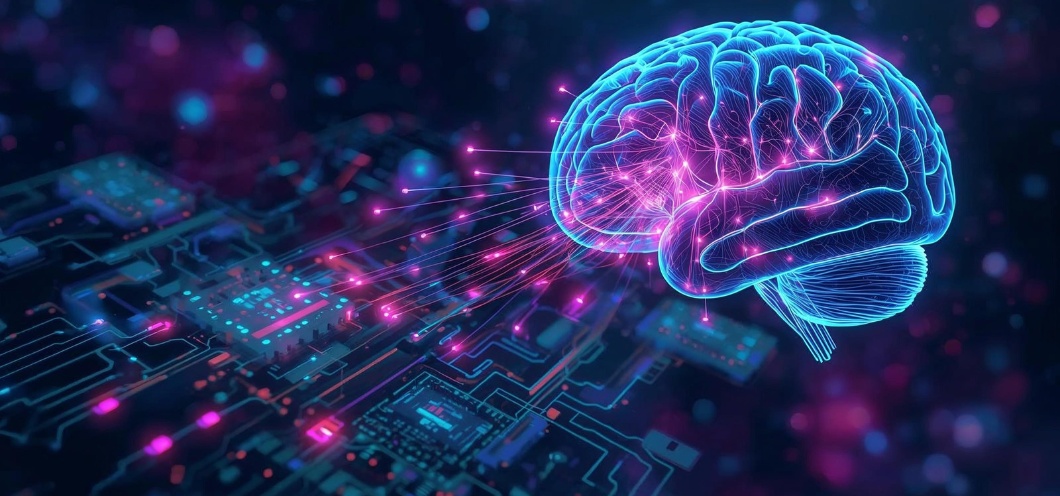- Vaishnavi K V
- 158
Technology
Is Brain-Computer Interface the Next Big Leap in Future Tech?

Image courtesy:Canva AI
Technology has always blurred the line between humans and machines—from smartphones that connect us instantly to AI assistants that predict our needs. But the next revolution could be far more intimate: the brain-computer interface (BCI). This groundbreaking innovation has the potential to change how we work, communicate, and even heal, making it one of the most exciting areas in future tech today.
What Is a Brain-Computer Interface?
A brain-computer interface is a direct communication pathway between the human brain and an external device, often a computer. Unlike traditional devices that require touch, voice, or gestures, a BCI bypasses physical input and translates brain signals into digital commands. In simple terms, it allows people to control technology using only their thoughts.
Also Read: The Future of Virtual Reality and Augmented Reality Technologies in Business
Why Brain-Computer Interface Matters
The applications of BCI are vast and transformative:
Medical Advancements
For patients with paralysis or neurological disorders, a brain-computer interface can restore mobility and independence. BCIs are already helping individuals control prosthetic limbs, type on virtual keyboards, and communicate without speech.
Enhanced Human-Computer Interaction
Imagine operating your phone, computer, or even your car without lifting a finger. BCIs could redefine how humans interact with digital devices, making interactions seamless and intuitive.
Cognitive Enhancement
Researchers are exploring how BCIs might boost memory, concentration, or even learning speed. While still experimental, these possibilities raise both excitement and ethical debates.
The Challenges Ahead
Despite its promise, the brain-computer interface faces several challenges:
- Safety and Ethics – Implantable devices raise questions about data privacy, consent, and even “mind hacking”
- Accessibility – Current BCI technology is expensive and limited to research or medical use. Scaling it for wider adoption will take time
- Reliability – Human brain signals are complex, and translating them into accurate digital commands remains a scientific hurdle
The Future of Brain-Computer Interface
Big tech companies and startups alike are heavily investing in BCI research. Companies like Neuralink are developing implantable devices, while non-invasive solutions using EEG (electroencephalogram) headsets are also gaining traction. Experts predict that within the next decade, the brain-computer interface could move beyond labs and hospitals into mainstream consumer use, much like smartphones did in the early 2000s.
Conclusion
The brain-computer interface represents more than just another gadget—it’s a leap toward merging human cognition with digital intelligence. While challenges remain, its potential to transform healthcare, accessibility, and human-machine interaction is undeniable. Whether we view it as an empowering tool or a step into uncharted ethical territory, one thing is certain: BCI is shaping up to be the next big leap in future tech.
Tags:
Digital TransformationFuture TechAuthor - Vaishnavi K V
She is an exceptionally self-motivated person with more than 3 years of expertise in producing news stories, blogs, and content marketing pieces. She uses strong language and an accurate and flexible writing style. She is passionate about learning new subjects, has a talent for creating original material, and has the ability to produce polished and appealing writing for diverse clients.
Popular Post



